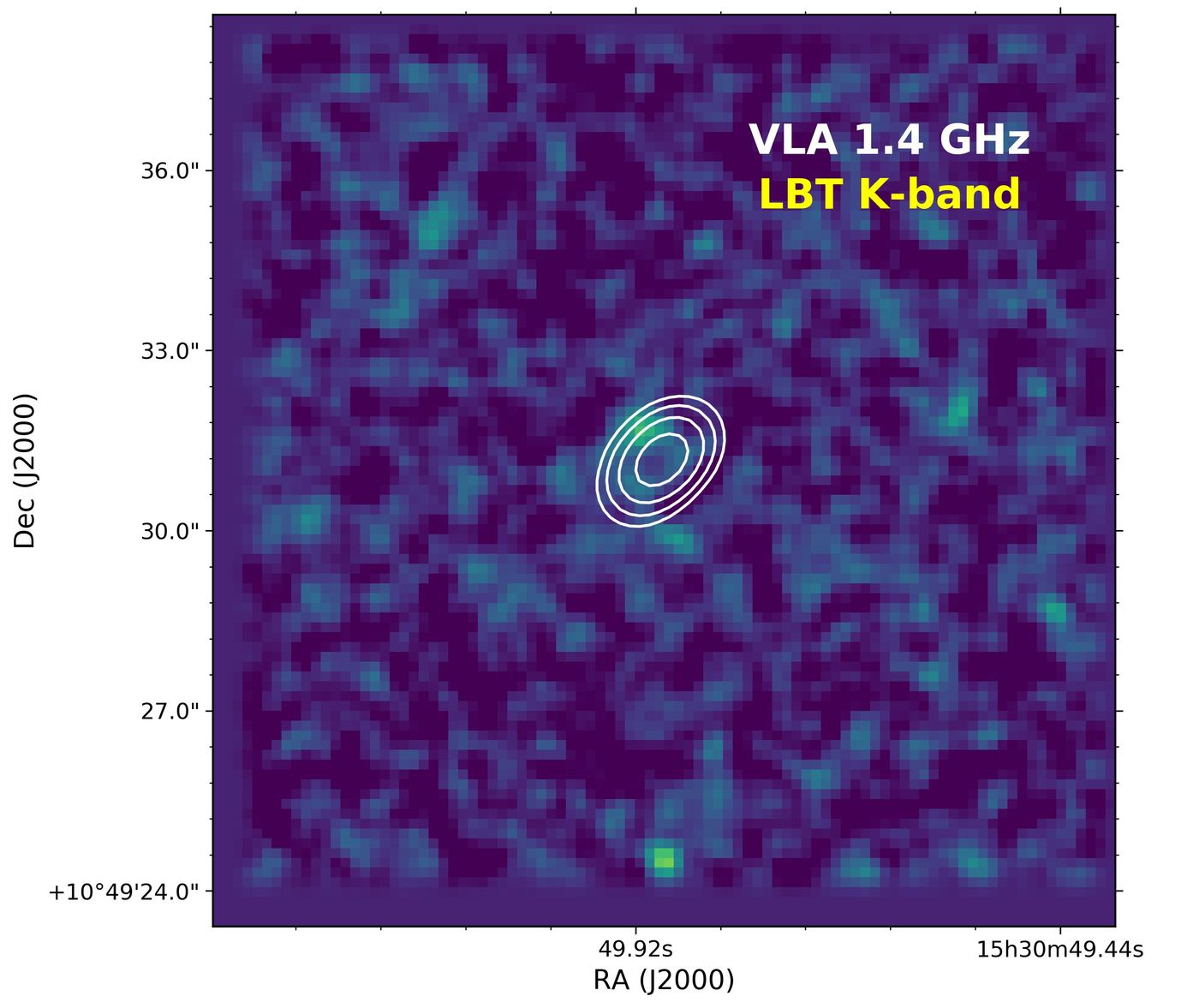Astronomers Say This is the Most Distant Radio Galaxy Ever Found
Our universe is a mysterious place, and that’s why astronomers are always peering into the depths of outer space in search of clues. Sometimes they find things, and sometimes they don’t, but one international team of astronomers recently happened upon a captivating discovery while gazing around with the Giant Meter-wave Radio Telescope (GMRT) in India.
Image Credit: Leiden Observatory
Upon validating their discovery with two additional observatories, including the Gemini North Telescope in Hawaii and the Large Binocular Telescope in Arizona, the researchers realized they were glancing at the most distant high-redshift radio galaxy (HzRG) ever found. They later named it TGSS15030 and published their findings in the Monthly Notices of the Royal Astronomical Society.
The follow-up observations proved to be particularly significant, as they enabled the team to discern TGSS1530’s redshift of 5.72. The light from TGSS1350 traveled approximately 12 billion light-years from its origin to reach Earth, and this jaw-dropping figure speaks to the radio galaxy’s distance and old age.
The previous record-holder for the title ‘most distant radio galaxy’ was found in 1999, and it exhibited a redshift of 5.19. As you might be able to tell from the figure difference, TGSS1530 is quite a bit farther.
The astronomers say TGSS1530 measures 11,400 light-years across, and that a supermassive black hole resides at its center that accretes gas and dust from its surroundings. As the black hole absorbs this excess matter, it ‘burps,’ emitting high-energy light bursts that are visible from afar.
Related: Astronomers spy on an ancient galaxy megamerger
"It is very surprising how these galaxies have built up their mass in such a short period of time," said study lead author Aayush Saxena.
"Bright radio galaxies harbor supermassive black holes," added study co-author Huub Röttgering.
"It is amazing to find such objects as early in the history of the universe; the time for these supermassive black holes to form and grow must have been very short."
Related: Astronomers find a new object orbiting Cygnus A
Radio galaxies aren’t very common, and their scarcity makes them rather attention-piquing when astronomers happen upon them. They’re a testament to the early universe, and astronomers hope that by studying them, we can learn more about what the early universe may have been like.
As space observatories become more and more powerful with time, astronomers expect that we’ll find more of these astronomical dinosaurs.
Source: Phys.org









